VISIT THE ALENTEJO WINE REGION OF PORTUGAL

The (Lower) Alentejo wine region (Herdade da Malhadinha Nova)
Photo source: Winekeller
Winekeller wine travel and wine tour experiences in the Alentejo wine region:
An introduction to the Alentejo wine region, Portugal
The Alentejo is one of Portugal’s most emblematic regions. It’s a vast, sun-drenched area, covering much of the southern part of Portugal, just above the Algarve. It has beautiful beaches, rolling hills and wild, open plains and is also Portugal’s largest wine region, responsible for nearly 50% of the country’s wine production. It represents about 30% of Portugal’s land dedicated to vineyards and wine, but only 5% of the Alentejo is covered with vineyards!
The Alentejo is one of Europe's least populated areas and is often referred to as ‘the hidden Portugal’ - or perhaps its ‘best kept secret’? It’s also known as the land where time slows down - probably because of the heat! You can go for miles, between towns, without seeing anyone and most of the land is divided up into large farming estates. This isn’t a region for the masses - you visit Alentejo for its art, for its incredible landscapes, for its traditions, great wines and gastronomy and for its focus on sustainable living.
The landscapes however are stunning and the Alentejo is responsible for some of the best wines and best wine tourism in Portugal.
What does the name Alentejo' stand for?
The Alentejo is translated as ‘beyond the River Tagus’. The Alentejo plains in the south-east of Portugal, extend as far as the eye can see and start close to the River Tagus. The Alentejo is divided into 3 geographic sub-regions and as you move inland the temperatures rise and the pace of life slows down: Northern - or Upper - Alentejo which extends to the region’s capital Évora, where the landscapes are marked by gentle valleys and vast, green flatlands and marshlands, Lower Alentejo, where the landscapes are replaced by flat, wild, open spaces, dotted with cork oak trees, almond trees, orange and lemon trees and olive trees and finally the Alentejo coastal area.
Alentejo is also a region of rich history and tradition, featuring mysterious neolithic stones scattered across the region, iconic hilltop forts and stunning convents and monasteries. Portugal’s Alentejo is a region waiting to be discovered!
Typical landscapes in Upper Alentejo
Typical landscapes in Lower Alentejo
A land of ancient history and castles!
The stunning Alentejo coast
Alentejo wines
There is plenty of evidence to suggest wine was part of every-day life in Alentejo, by the time the Romans arrived in the south of Portugal. The Romans were responsible for influencing and developing winemaking techniques in the region and there is much evidence of this today, in particular the enduring tradition of making ‘Talha wines’, fermenting and storing wine in clay vessels, called ‘Talhas de barro’. This tradition is practiced today by a growing number of Alentejo wineries.
In the centuries before the Phylloxera epidemic, the 2 world wars, successive economic crises and a campaign to grow wheat and other cereals here instead of vines, Alentejo produced some excellent wines. It wasn’t until the end of 1940s, that the industry started to recover.
Alentejo, Portugal map
The Alentejo wine region was demarcated in 1988 and today, Alentejo produces some world-class wines.
It is divided into eight ‘PDO’ sub-regions: Reguengos, Borba, Redondo, Vidigueira, Évora, Granja-Amareleja, Portalegre and Moura. The Alentejo landscape is relatively flat and there is little influence on the dry, hot climate from the Atlantic ocean. The few hill and mountain ranges create the diverse growing conditions seen across the 8 sub wine-growing regions.
Alentejo is also probably Portugal's most promising source of full-bodied, deep-coloured, accessible table wine, sold mainly as IGP Alentejano, subject to more flexible winemaking rules than those of the 8 PDOs.
Alentejo wines, be they white, rosé or red, are full of strong aromas, round and smooth, full-bodied, with a unique ability to be drunk while young, but able to age with distinction. The climate here is more preferable for making red wine, but Alentejo does produce some excellent white wines too.
Wine prices in Alentejo are still reasonable and this is certainly one of the most promising wine regions in the world.
Vineyards at Herdade do Esporão in Central Alentejo - Source: Winekeller
Alentejo grape varieties
Alentejo grape varieties - white wine
Alentejo white wines tend to be generally light, fresh, aromatic and dry, with aromas of tropical fruits. The typical white indigenous grapes include Antão Vaz, Arinto and Roupeiro.
Alentejo grape varieties - red and rosé wine
Alentejo red wines tend to be deep in colour, with aromas of wild and red berries, rich, fruity wines with firm tannins and an intense bouquet, however they can also be lighter in style and fruitier. The typical red indigenous grapes include Alfrocheiro, Aragonēs (Tempranillo), Trincadeira, Alicante Bouschet and Castelão. The staple Portuguese grape variety, Touriga Nacional, is also planted, along with some Cabernet and Syrah.
Alentejo wineries and Alentejo vineyards
Despite the hot, dry climate and the relatively poor quality soils, vines thrive here and the excellent Alentejo terroir has resulted in significant investment in the wine sector, both in wine production and wine tourism. This has resulted in the production of some of the best Portuguese wines and, consequently, in the international recognition of Alentejo wines.
Just 1% of Alentejo land is made up by vineyards. Alentejo wineries tend to be on large plots of land and typically, many are ‘art’ or ‘architect’ inspired wineries. In addition to the larger wine estates, many hotels, especially smaller Alentejo boutique hotels and herdades (farmsteads) have their own wineries. The vineyards are well maintained, designed to accommodate machinery.
Wines of Alentejo Sustainability Program (WASP)
The Wines of Alentejo Sustainability Program (WASP) was established in 2015 to promote environmental, economic and social sustainability practices. 60% of Alentejo wineries are actively engaged in the program and can achieve official WASP certification for their wines. This is an award-winning program and is setting the standards for sustainable winemaking in Portugal.
Alentejo cork
Cork is one of the most characteristic natural products of Portugal and is produced in great quantities in the Alentejo. In fact, the Alentejo is the world’s largest producers of cork. Portugal produces 55% of the world’s cork and 85% of this comes from the Alentejo.
The cork oak tree (quercus suber), is native to the Alentejo and is one of the most common tree species in Portugal. The process of removal, done by hand, once every 9 years, involves removing the outer bark. You can see the stripping of the bark in the Alentejo and a red tree indicates it has had its bark recently removed.
Alentejo cork trees
A modern wine hotel - L'And Vineyards
Traditional estate - Herdade do Sobroso
'Talha' wines - the traditional way
Visit Alentejo - travel guide for Portugal’s Alentejo region
Travel to the Alentejo and marvel at the vast scenery and unspoilt landscapes, explore the pretty white-washed villages, vineyards, olive groves, forests, nature reserves, the Renaissance palaces, the beautiful wild Atlantic coast, neolithic monuments, Roman temples and UNESCO heritage castles. You can also expect authentic, traditional gastronomy and the warmest of welcomes.
When to visit Alentejo
Exploring Alentejo can be challenging in the heat of Summer, unless maybe if you’re at the beach! We would recommend visiting in late Spring or the Autumn when temperatures are cooler, but the climate is still warm and mild. April/May is said to be the prettiest and most pleasant time to visit, before the searing sun turns the fields brown, however we have visited in late February and it was glorious!
Alentejo hotels - Where to stay in Alentejo
There are lots of accommodation styles to choose from in Alentejo - ancient posadas, charming, relaxed family-run hotels, boutique hotels - all with excellent facilities - or modern campsites and heritage grade hotels set within ancient monasteries and palaces. ‘Herdades’, relaxed family-run farmsteads, or Alentejo country hotels - are the epitome of Alentejan hospitality with an emphasis on personal touch.
Stay on a luxury Alentejo estate - Herdade da Malhadinha Nova
Stay in a restored ancient monastery - Convento do Espinheiro
What to see and do in Alentejo
UNESCO has recognised much of Alentejo’s treasured heritage and awarded protected status to many aspects of it.
Visit Évora Alentejo
The jewel in the crown is Évora - an unmissable highlight with a uniquely rich history. So much so, that the entire town is recognised as a UNESCO World Heritage Site. Neolithic man, the Phoenicians, Romans and Moors - all played their part here. Highlights include the Roman temple, cathedral, and the magnificent Praça do Giraldo square.
Just outside Évora, visit the Cromeleque dos Almendres - a formation of 95 standing stones which predate Stonehenge.
The famous Roman Temple in Evora
The Cromeleque dos Almendres outside Evora
Visit Elvas
Perched high on a hill, Elvas is a fascinating place with narrow, cobbled streets and a compact cathedral, set at the head of the elegant central square. The star-shaped fortifications here, built as a defence from the Spanish, are today another UNESCO World Heritage Site. They date from the 17th century and are the largest in the world with a perimeter of 10 km. Stroll along the town’s ramparts for sensational views and a real sense of history.
Try also to visit the fortified hilltop village of Monsaraz - known as one of the jewels of Alentejo and the ancient art at 18th century Falcoaria Real (Royal Falconry) at Salvaterra de Magos.
Activities - what to do in Alentejo:
There are lots of activities to enjoy in Alentejo - hiking, cycling, golf, horse-riding, even hot-air ballooning!
There are many well-marked walking trails - this is prime walking country. The Rota Vicentina is a network of some 750km of walking and hiking trails - recognised as one of Europe’s great walking trails. Alentejo is also great cycling country.
In terms of water sports, there are many inland and coastal Alentejo beaches to enjoy, with big surf and sheltered coves. The Troia-Melides peninsula is known for its beaches and beach lifestyle and glamorous Comporta is a celebrity hotspot. Inland, you can also enjoy the Alqueva reservoir, which is the largest artificial lake in Europe and offers lots of wonderful leisure activities.
Alentejo is one of Europe’s most tranquil regions and wellness activities are popular here, including the thermal baths north of Elvas, called Cabeçode Vide.
If you’re interested in astronomy or star gazing, Alentejo, with no light pollution, is also famous for its ‘dark skies’, especially in the Alqueva district around Monsaraz, which enjoys UNESCO World Heritage status for its Dark Sky reserve - one of the few in the world.
Part of the beautiful Alqueva Reservoir
See the dark skies in Alentejo
Alentejo Nature Parks
The Parque Natural do Vale do Guadiana in the south of Alentejo features one of Europe’s most diverse range of birds and mammals and you can enjoy bird watching in the Reserva Natural sa Lagos de Santo André e da Sancha and the Paul do Boquilobo Nature Reserve.
Culture
There are many museums and art galleries to appreciate the rich history and culture of this region. You can follow the Marble Route to see the stunning historic buildings, which give you an impression of the wealth that once flowed into the region, as well as the Fresco Route which takes in beautiful ornate artworks from as far back as the 15th century.
Ancient crafts are still practiced today, especially intricate, hand-woven carpets, traditional cow bells, called chocalhos and cork products.
Alentejo - some of the best Wine Tourism in Portugal
The Alentejo Wine routes (Rota dos Vinhos do Alentejo), are the most visible form of wine tourism, covering a total of 70 wineries, all with a range of visitor experiences, including wine tours, wine tastings, restaurants and rural hotels.
A key date in the Alentejo wine calendar each year is the ‘Festival of Vine and Wine’ in Borba for 9 days in November.
You can visit the Rota dos Vinhos do Alentejo in Evora
Gift shops selling traditional crafts arts and crafts
Alentejo gastronomy
The Alentejo cuisine is one of the richest and most authentic regional cuisines in Portugal. It features rich and robust flavours based on the freshest and simplest of seasonal ingredients. There is a vibrant ‘farm to table’ movement here and top class restaurants tend to deliver traditional dishes with a modern twist.
Cereal grains are at the core of Alentejo gastronomy as well as bread and olive oil, both used as a base for soups. (Alentejo produces 90% of Portugal’s olives and it is famous for its olive oils.) Bread is often moistened by fish or meat juices and fried, with the addition of meat, fish and vegetables.
Lamb and beef feature strongly on the Alentejo table, as do sheep cheeses, including ‘Nisa’, ‘Serpa’ and Évora varieties. The Alentejo ‘black pig’ - or ‘porco preto’ is probably the most renowned ingredient producing Alentejo dishes such as smoked pork, sausages and pata negra ham. Other staple foods include herbs, creamy Carolino rice, roasted peppers, Atlantic fish and fish stews (caldeirada) and octopus salad.
A meal is often concluded with ‘Encharcada’, a rich, syrup and egg dessert topped with cinnamon, ‘convent’ sweets and pastries (called ‘Doces Conventuais’ and once made in the convents and monasteries), cheesecake tarts (queijadas) from Serpa and perhaps some Elvas plums (Ameixa d’Elvas).
For more information about Alentejo, see ‘VisitAlentejo’ and ‘VisitPortugal’.
Pork meats, cheeses & olive oil
Typical fish stew with fried bread
Lamb & seasonal vegetables
A sweet dessert with oranges and syrup




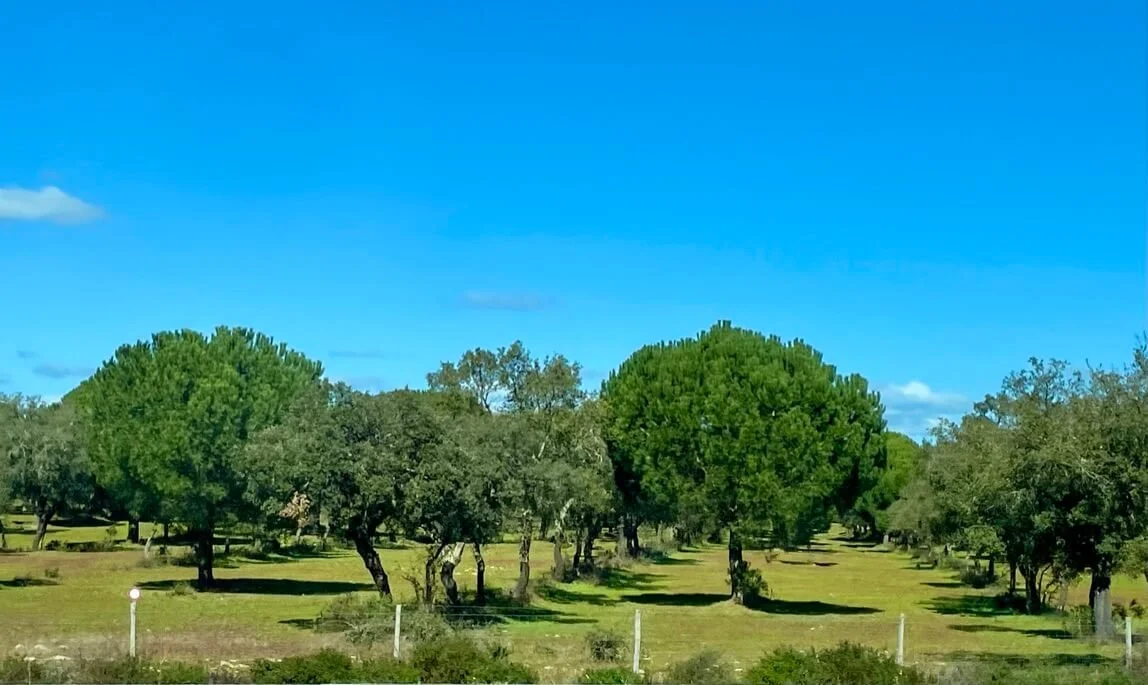
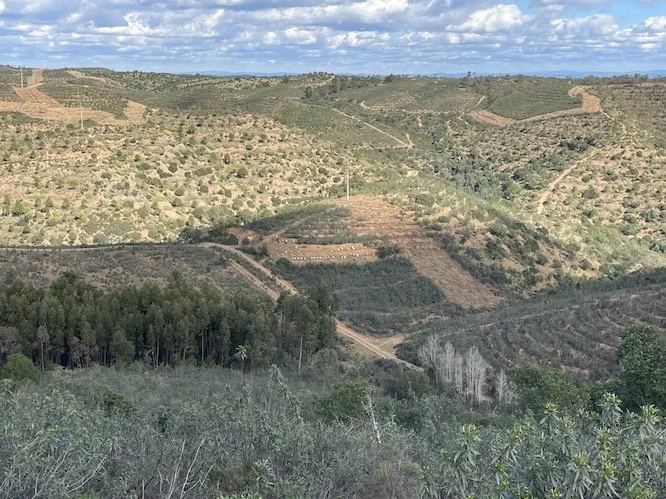
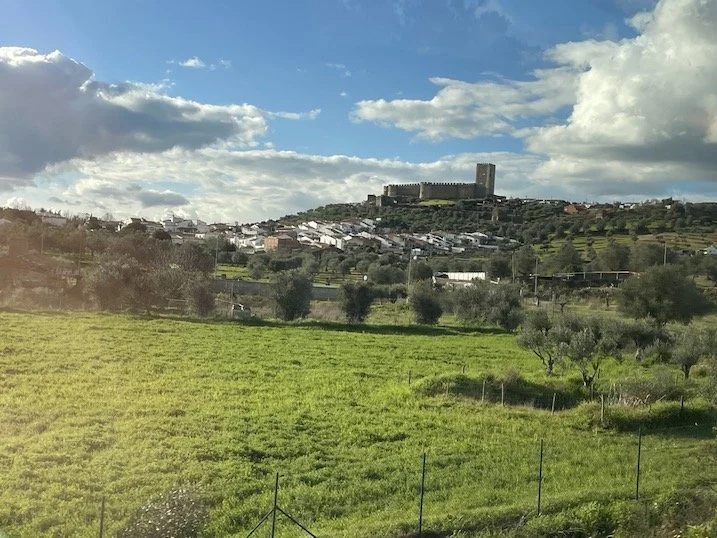
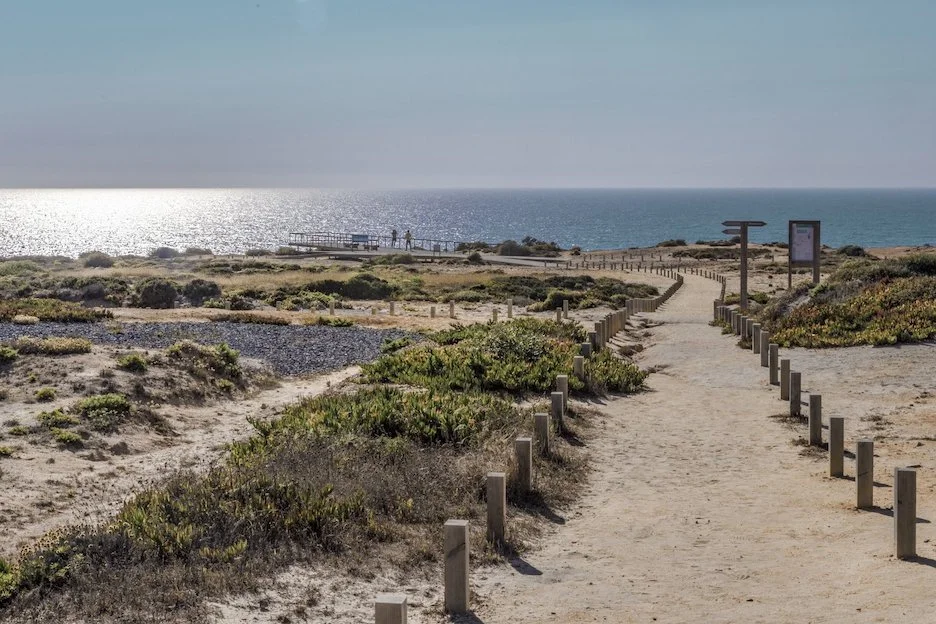
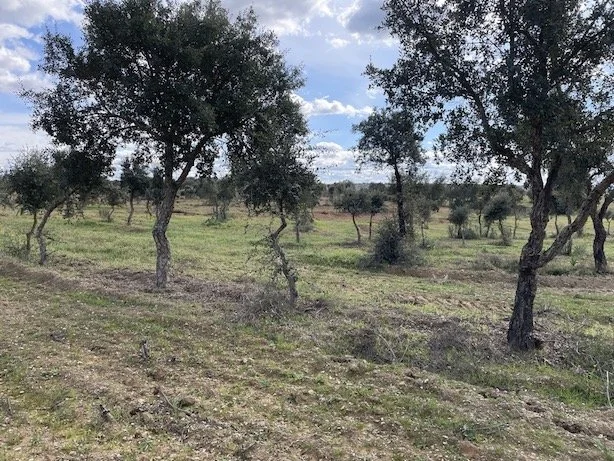
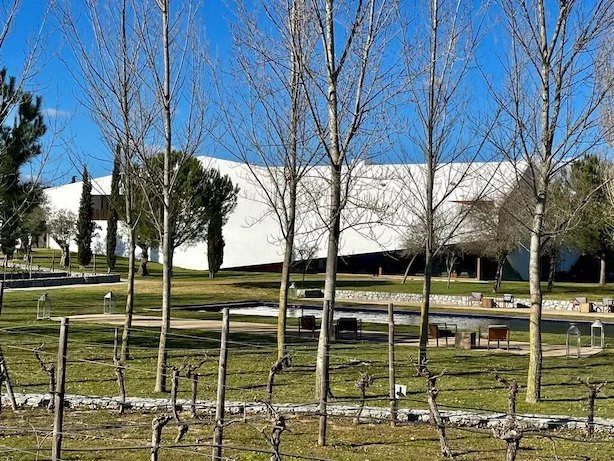
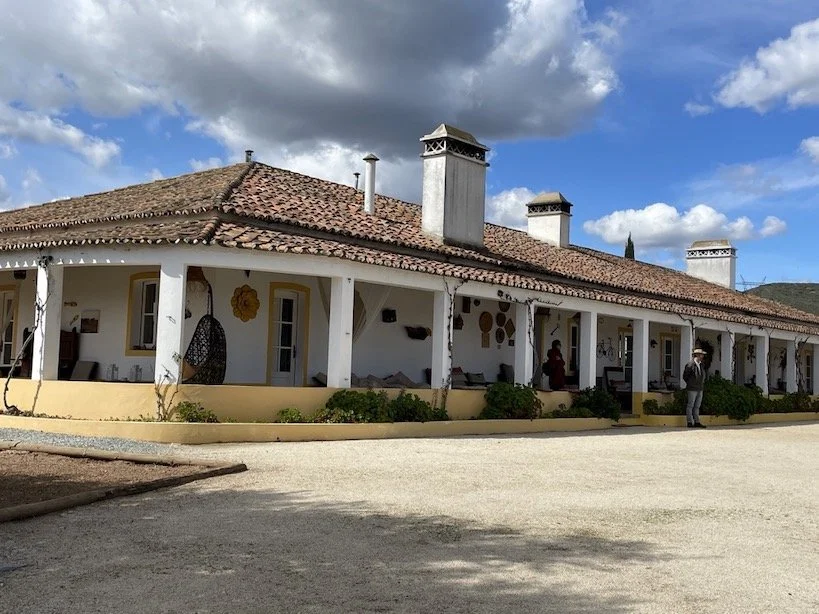
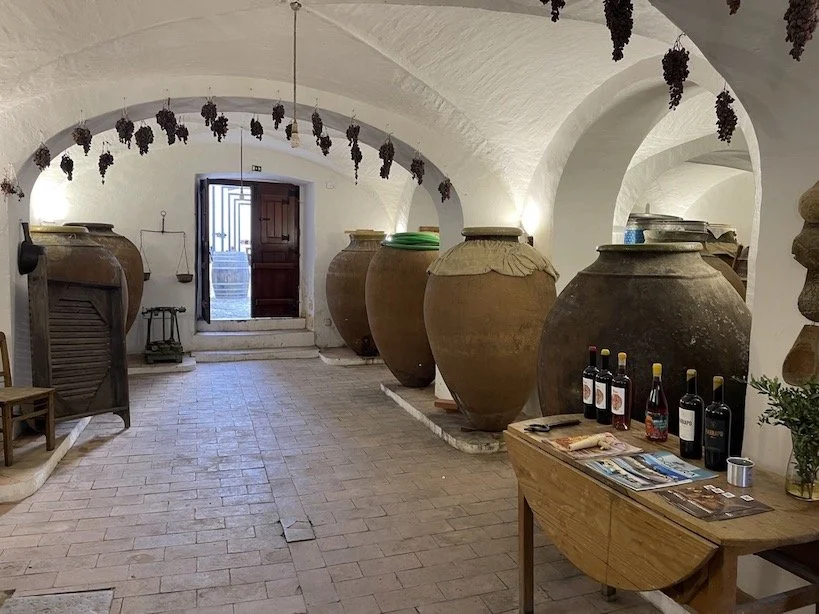
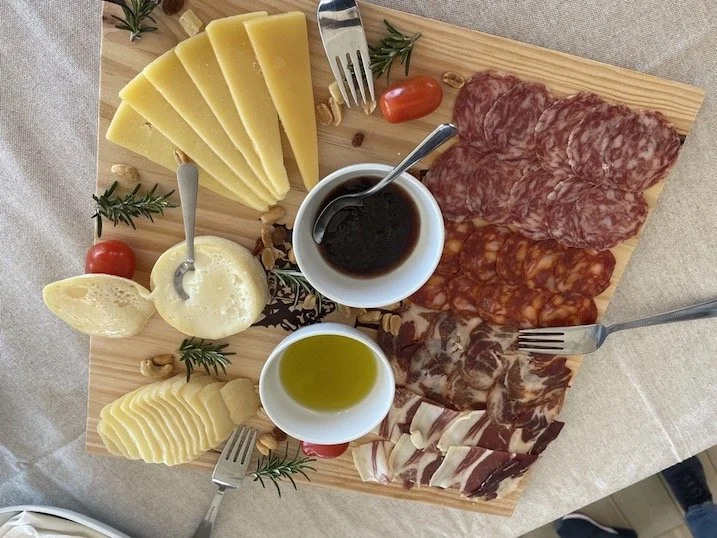


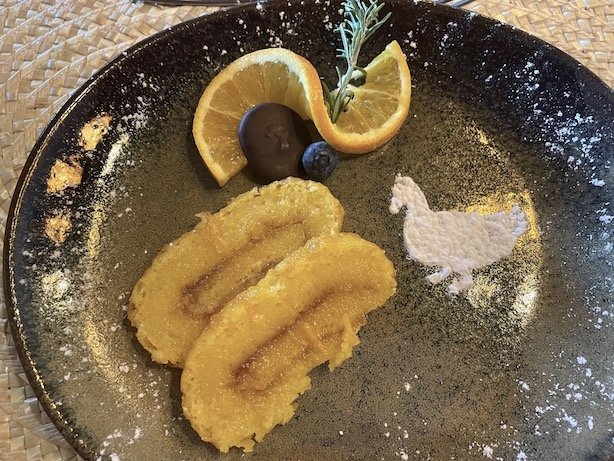
Spend a day learning about and tasting Alentejo wine and olive oil - visit 2 top Alentejo wineries including Alentejo wine industry and organic farming pioneers, Esporão and wine innovators, Ervideira…